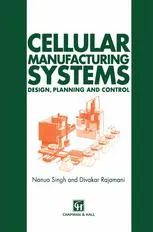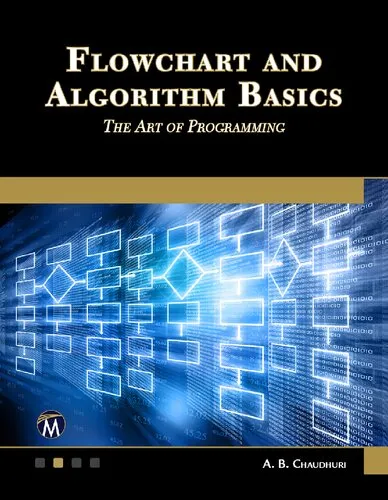Cellular Manufacturing Systems: Design, planning and control
5.0
Reviews from our users

You Can Ask your questions from this book's AI after Login
Each download or ask from book AI costs 2 points. To earn more free points, please visit the Points Guide Page and complete some valuable actions.Related Refrences:
Introduction to "Cellular Manufacturing Systems: Design, Planning, and Control"
The transformative world of cellular manufacturing has continuously evolved to meet the demands of modern production systems. In our book, “Cellular Manufacturing Systems: Design, Planning, and Control,” we explore the theoretical foundations and practical applications of cellular manufacturing. This book serves as an essential guide for researchers, practitioners, and students who aspire to understand and implement an efficient manufacturing system in a fast-changing industrial landscape.
Cellular Manufacturing is widely regarded as a mechanism to reduce waste, improve resource utilization, and streamline production processes. By organizing machines and workstations into production cells, enterprises can achieve greater efficiency, flexibility, and responsiveness to customer demands. However, establishing an optimal cellular manufacturing system requires a multi-disciplinary approach, integrating knowledge in design, planning, and control. This is precisely where this book provides in-depth coverage to address real-world challenges.
Detailed Summary of the Book
In “Cellular Manufacturing Systems: Design, Planning, and Control,” we delve into a systematic and comprehensive approach to cellular manufacturing. The book is structured to bridge the gap between theoretical research and industrial practices, ensuring that our readers have actionable insights that can solve real-life problems. Here’s what the book covers in detail:
- A thorough introduction to the concept and fundamentals of cellular manufacturing systems (CMS).
- An exploration of cell formation techniques, including methods such as machine-part grouping and their quantitative optimization approaches.
- Best practices in layout design, where we examine different techniques to reduce material handling costs and production time.
- The role of planning in CMS, emphasizing demand forecasting, production scheduling, and inventory management in cellular setups.
- Control mechanisms necessary for efficient operation, featuring case studies and automation technologies that enhance the reliability of cellular systems.
- The impact of innovative technologies like robotics, artificial intelligence, and lean manufacturing on cellular systems.
Together, these chapters form an exhaustive guide that enables students, researchers, and practitioners to design, implement, and sustain highly effective CMS solutions in a competitive industrial environment.
Key Takeaways
- Understand the fundamental principles and advantages of cellular manufacturing systems.
- Learn a variety of cell formation techniques and their respective algorithms.
- Discover actionable strategies for integrating cellular systems with lean manufacturing practices.
- Gain deeper insights into advanced planning methods for achieving optimal production scheduling and resource allocation.
- Explore the latest technological advancements influencing CMS, including artificial intelligence and automation tools.
- Leverage real-world examples and case studies to understand practical challenges and solutions in CMS implementation.
Famous Quotes from the Book
“Cellular Manufacturing is not just a methodology, but a philosophy aimed at simplifying complexity, ensuring sustainability, and maximizing efficiency.”
“Optimal manufacturing is achieved when design, planning, and control work cohesively to create systems that are adaptive yet resilient.”
Why This Book Matters
Manufacturing industries stand at the crossroads of innovation and disruption. With increasing global competition and rapidly changing customer demands, there is a greater need than ever to invest in smarter and more efficient manufacturing systems. Cellular manufacturing addresses these needs by enabling industries to minimize waste, reduce costs, and ensure production agility in dynamic environments.
Our book, “Cellular Manufacturing Systems: Design, Planning, and Control,” is a culmination of years of research and practical engagement in the field of advanced manufacturing. It is not merely a theoretical primer but a repository of actionable frameworks, case studies, and modern applications that equip readers with the tools to succeed in real-world production environments. By integrating emerging technologies with cellular principles, this book is your roadmap to overcoming today’s toughest manufacturing challenges and laying the foundation for future success.
Whether you are a student delving into the subject for the first time, a researcher seeking inspiration for new studies, or a practitioner looking for practical solutions, this book offers unmatched value. By reading this book, you can transform your understanding of manufacturing and elevate your industrial processes to new heights of efficiency and effectiveness.
In conclusion, “Cellular Manufacturing Systems: Design, Planning, and Control” is more than just a guide—it’s a gateway to achieving excellence in modern manufacturing systems.
Free Direct Download
You Can Download this book after Login
Accessing books through legal platforms and public libraries not only supports the rights of authors and publishers but also contributes to the sustainability of reading culture. Before downloading, please take a moment to consider these options.
Find this book on other platforms:
WorldCat helps you find books in libraries worldwide.
See ratings, reviews, and discussions on Goodreads.
Find and buy rare or used books on AbeBooks.
1136
بازدید5.0
امتیاز0
نظر98%
رضایتReviews:
5.0
Based on 0 users review
Questions & Answers
Ask questions about this book or help others by answering
No questions yet. Be the first to ask!





![The Ultimate iOS Interview Playbook: Conquer Swift, frameworks, design patterns, and app architecture [Team-IRA]](https://s3.refhub.ir/images/thumb/The_Ultimate_iOS_Interview_Playbook__Conquer__29925.webp)







